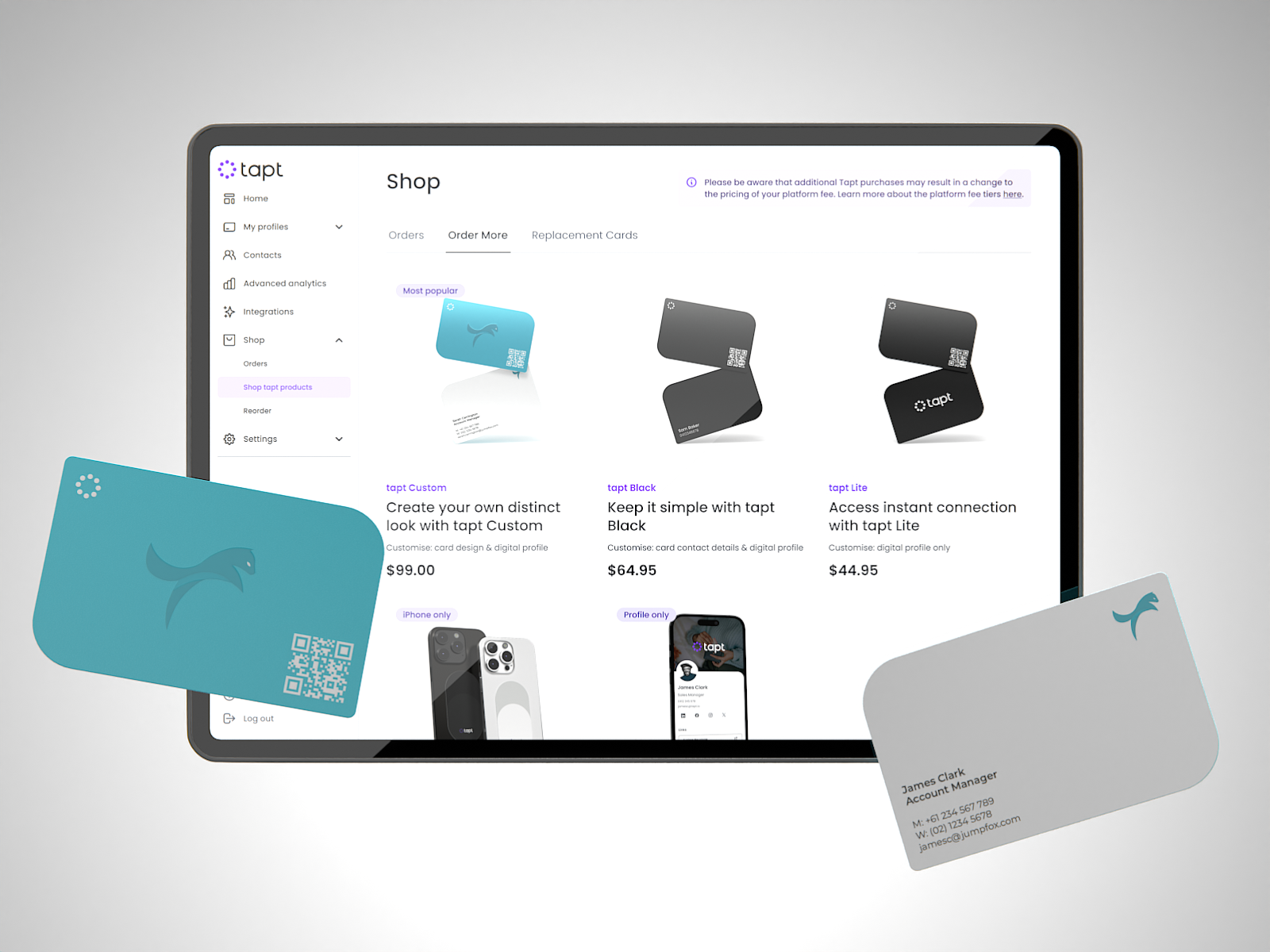Australia’s business landscape is evolving rapidly, with growth no longer confined to traditional CBDs. Instead, the sharpest rise in business activity is occurring in outer suburbs and regional hubs.
That’s according to new research by the team here at Tapt. To uncover where growth in the number of businesses is taking place, we analysed ABS data on the number of active businesses by location and industry from 2019 to 2024. The research reveals the local government areas (LGAs) where business registrations are growing the fastest, along with the industries experiencing the most significant expansion.
Explore the findings below to see how your local area stacks up, as well as which industries could offer the best opportunities for your next business venture.
The areas with the fastest-growing number of businesses
Melton, located 45 minutes from Melbourne, has taken the top spot as Australia’s fastest-growing LGA for business growth, with an impressive 86.5% increase in registered businesses over the past five years, averaging 13.5% growth annually. Nearby Wyndham isn’t far behind, recording an 80.6% surge in business numbers, followed by Casey and Hume, also in Victoria, both experiencing over 50% growth since 2019. In fact, seven of the top ten areas were located in Victoria, highlighting the rapid pace of business growth in the state. Outside Victoria, Camden in New South Wales led the charge with a 50.2% rise, while Blacktown also made the top 10.
On the other end of the spectrum, the island of Hinchinbrook in Queensland recorded the slowest business growth nationwide, with an average decline of 0.84% per year and an overall decline of 4.2% in business numbers since 2019. Burdekin - located just below Townsville - followed, down 1.1% over five years, while Inverell in regional New South Wales remained virtually unchanged, recording a 0.00% average annual growth rate.
The states with the fastest-growing number of businesses
Over the past five years, the Australian Capital Territory has led the way with the highest business growth rate in the country, posting consistent year-on-year increases. Victoria followed closely behind, driven by a significant influx of new businesses and steady growth off the back of an already large business base. Interestingly, Victoria’s biggest spike came during the 2021–2022 period, right through the lockdown and as restrictions began to ease. Across the board, every state showed positive momentum, with not a single year of decline recorded nationwide.
Much of this growth has come from non-employing businesses - sole traders, freelancers, and contractors - which expanded rapidly in the ACT (+24.9%), Victoria (+25.8%), Tasmania (+18.8%) and New South Wales (+18.4%). Medium-sized businesses also grew steadily, especially in Victoria (+19.7%), Western Australia (+24.4%) and Queensland (+24.7%), suggesting more businesses are successfully scaling beyond the startup phase. While large corporations remain few, they posted the sharpest percentage growth, led by the ACT (+57.9%), South Australia (+37.5%), and Western Australia (+32.7%).
The areas with the fastest-growing number of businesses in New South Wales
Camden tops the list as New South Wales’ fastest-growing LGA for number of businesses, with a 50.2% increase in registered businesses over the past five years, averaging 8.49% annual growth. Blacktown follows with a 39.6% rise, likely driven by rapid development and population growth in Sydney’s west. Coastal and regional hubs are also gaining momentum, with Shellharbour up 29% and Byron Bay rising by 26.4%, as more people relocate for lifestyle reasons and take advantage of remote work to launch businesses. This is supported by the growth in NSW being led by sole traders, freelancers and contractors, with an 18.4% growth in non-employing businesses over the five years. Meanwhile, major centres like Liverpool, the Hills Shire, and Campbelltown recorded steady growth of over 25%.
The areas with the fastest-growing number of businesses in Victoria
Seven of Victoria’s LGAs — including Melton, Wyndham, Casey, and Hume — not only top the state for business growth but also rank among the top 10 fastest-growing areas nationwide, all likely to be driven by population booms and rapid urban development in Melbourne’s outer suburbs. Whittlesea, Cardinia, and Mitchell also posted strong growth above 40%. Beyond these national standouts, regional LGAs like Surf Coast, Greater Geelong, and Moorabool are emerging as key players, each seeing nearly 28% growth, highlighting a broader trend of business expansion beyond metropolitan Melbourne. This may be driven by the growth in non-employing businesses in the state, rising by 25.8% since 2019. Large corporations' growth follows closely behind, with the number of these types of businesses growing by 24.7%.
The areas with the fastest-growing number of businesses in Queensland
Queensland’s fastest-growing LGAs for business highlight a mix of booming outer-metro areas and lifestyle-driven regional hubs. Ipswich leads the state, with a 35.5% increase in registered businesses since 2019, driven by rapid population growth and affordable development opportunities. Logan follows with a 27.9% rise, while the Sunshine Coast and Gold Coast continue their upward trajectory, growing 24.2% and 21.3% respectively, perhaps a testament to their appeal as lifestyle destinations with strong infrastructure.
Regional LGAs such as Livingstone, Isaac, and Fraser Coast also recorded solid gains of around 18–20%, suggesting that Queenslanders are increasingly embracing entrepreneurship outside major city centres. This trend is echoed in Moreton Bay, Noosa, and Lockyer Valley, which round out the top 10 with consistent growth across the board.
The areas with the fastest-growing number of businesses in South Australia
In South Australia, business growth is led by a mix of outer suburban and metropolitan LGAs. Salisbury tops the list with a 35.6% increase in registered businesses since 2019, followed closely by Port Adelaide Enfield (32.4%) and Playford (29.7%). These areas are likely benefiting from expanding populations and industrial development. Meanwhile, LGAs such as Campbelltown, Tea Tree Gully, and Marion have posted moderate but steady growth of 18–22%. Mount Barker and Norwood, Payneham and St Peters also made the top 10, along with the City of Adelaide, which saw a 16.1% rise.
The areas with the fastest-growing number of businesses in Western Australia
In Western Australia, outer metropolitan areas are seeing the strongest rise in business registrations. Kwinana leads with a 38.5% increase since 2019 and an average annual growth rate of 6.8%, followed by Armadale (34.7%). Karratha (32.4%) ranks in third place, highlighting growth in regional mining hubs. Serpentine-Jarrahdale, Gosnells, and Swan also feature prominently, all benefiting from expanding populations and new housing developments on Perth’s fringes.
The areas with the fastest-growing number of businesses in Tasmania
https://www.datawrapper.de/_/RMI0T/Tasmania’s business growth is being driven by urban fringes and key regional centres, with Glenorchy emerging as the state’s fastest-growing LGA for business registrations, up 32.4% since 2019. Clarence follows closely with a 28.3% rise, reflecting continued suburban expansion around Hobart. Hobart surprisingly ranks low on the list, at position 10 out of the 12 LGAs in Tasmania. This may be a reflection of the city’s maturity as a business centre and the shifting dynamics of growth toward more affordable and emerging areas around the city.
Business growth by industry
Australia's industries have experienced varied growth rates over the past few years, with some sectors thriving and others facing more modest expansion. The Health Care and Social Assistance sector has led the way, seeing a remarkable 41.2% increase from 2019 to 2024, likely to be driven by the rising demand for healthcare services amid an aging population and the COVID-19 pandemic. Other high performers include Administrative and Support Services and the Arts and Recreation Services, which grew by 27% and 26.9% respectively.
In contrast, some industries have struggled to maintain growth. The Agriculture, Forestry, and Fishing sector saw a slight decline of 0.7%, as challenges like climate change and labour shortages affected productivity. Wholesale Trade also experienced minimal growth, up just 2.9%, reflecting the pressures of shifting global supply chains and the rise of e-commerce.
Elon Datt, Founder and CEO at Tapt comments:
“We’re seeing a real shift in where business growth is happening across Australia — and it’s not just confined to the big CBDs anymore. Our analysis shows that outer suburban areas and regional hubs are emerging as powerful engines of growth, driven by a combination of lifestyle appeal, lower overheads, and changing work habits. As more people seek flexibility, affordability, and a better work-life balance, they’re choosing to build their businesses closer to home — and that’s changing the business landscape in a big way.
“For anyone thinking about starting a business, now is a great time to look beyond the traditional hotspots. These emerging areas offer strong local demand, growing populations, and often less competition. Importantly, they’re also developing into vibrant local business communities and getting involved in those networks can be a huge advantage. Whether it’s joining local business groups, attending events, or simply connecting with other entrepreneurs nearby, networking in these growth areas can open the door to valuable partnerships, referrals, and support.”
About the data
Our research investigates where in Australia businesses have grown or declined the most, based on a five-year time series of official government data. The aim is to identify the regions, industries, and business sizes that have seen the most significant changes in business activity between 2019 and 2024.
To conduct this analysis, we examined official government datasets from the Australian Bureau of Statistics (ABS) data cubes that report the number of active businesses by Local Government Area (LGA), State & Territory, industry group, and business size (by number of employees).
In total, the analysis covers thousands of geographic-industry-year data points, enabling comparisons across cities, regions, and economic sectors. The datasets measure the number of operating businesses at the beginning of each calendar year (e.g. the 2023 count reflects the number of businesses operating on 1 January 2023).
To ensure accuracy and consistency, our team used the published total rows for states and LGAs in the Australian dataset. These totals account for multi-location businesses which, according to ABS methodology notes, are only assigned to a single geography — either at the state or “No Usual Address” category level. This avoids overcounting and maintains consistency when comparing across regions.
The study has filtered for LGAs that have had an average of over 1,000 businesses over the 5 year span.
Regional analysis was performed at the LGA level (e.g. City of Sydney, Inner West Council, City of Melbourne) and then aggregated to states. Businesses related to the Reserve Bank of Australia, general government, or non-profit institutions serving households were excluded to align with ABS market sector definitions.
Business size was categorised using the number of employees, according to ABS employment size structures. Employee size bands used to categorise business size were:
-
Non-Employing
-
Small Business: 1-19 Employees.
-
Medium-sized enterprise: 20-199 Employees
-
Large corporation: 200 or more Employees




The Tapt Networking Report
The Business Growth Index UK